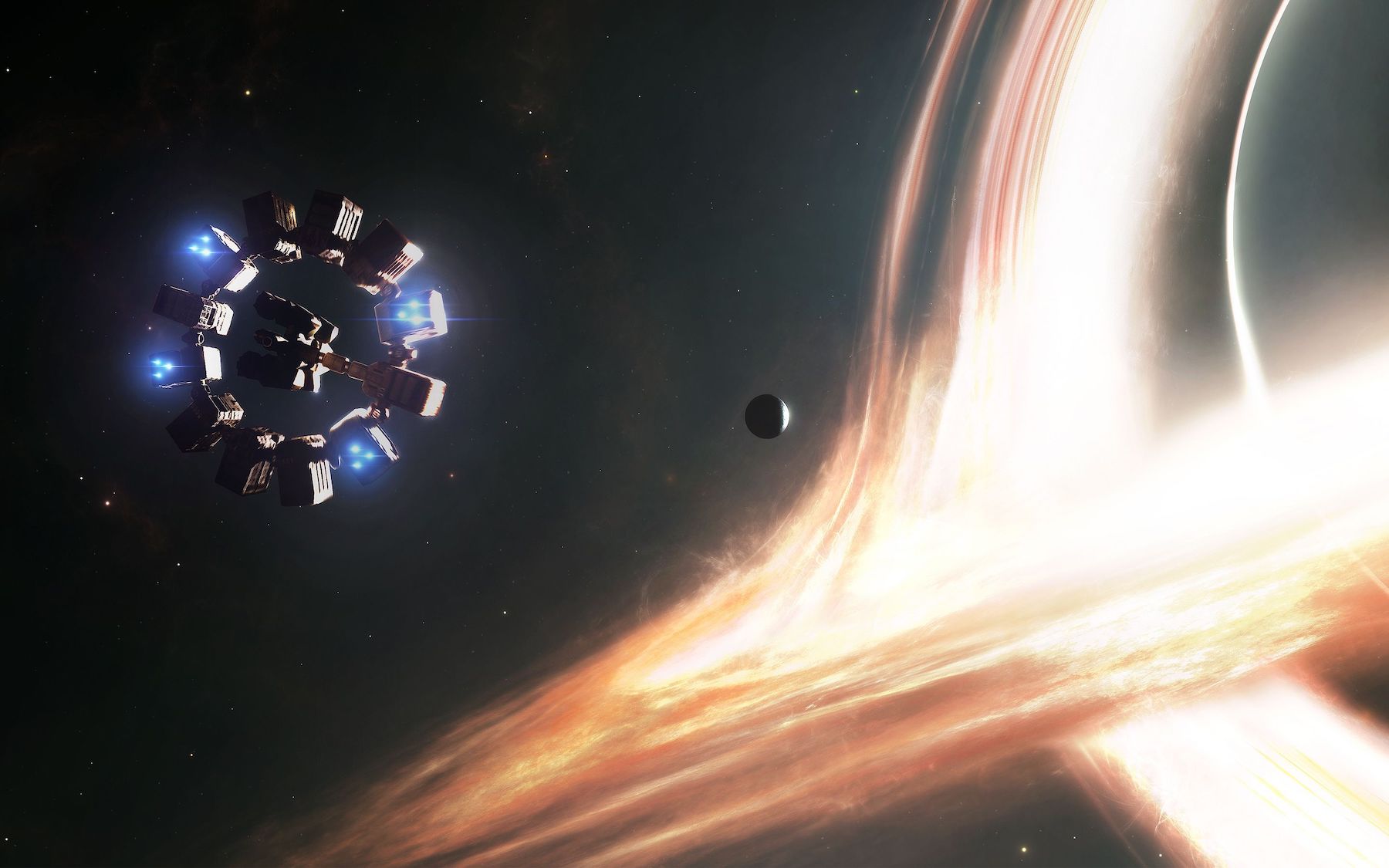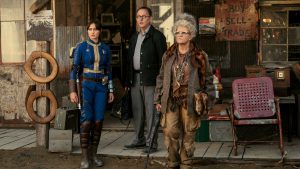
Space is great. It’s massive, it’s colorful, and you can have big fights with lasers there. It really does have everything you could want. But it also has problems—mainly, like we said, that it’s massive. In fact it’s so massive that if you want to go anywhere in it (apart from a few nearby planets with hardly anyone to shoot lasers at), by the time you get there, you’re dead. Now you might think that if you can just go fast enough, you’ll get there before you die, but there’s a problem.
That problem, as Albert Einstein tells us, is the speed of light. Light, in a vacuum, travels at just short of 300 million meters per second, fast enough to get from Earth to the moon in a little over a second. The thing is if you’re chasing a light beam, and travel behind it at 150 million meters per second, if you clock the light beam’s speed you’ll see it racing away from you at just under 300 million meters per second. But at the same time, an observer watching both of you will see the light beam move away from them at 300 million meters a second. The speed of light remains the same for both of you, but for that to be true, time has to be moving differently.
This has two important consequences. First, you are never going to be as fast as a beam of light. The second is that the closer you get to the speed of light, the more slowly time will pass to compensate.
Most movies get around this massive conundrum with hyperspace, warp drive, quantum jump technology, the improbability drive, or iso-hexagonic dimensional skipping. Alternatively, to keep your hard-sci-fi credentials, your astronauts might simply nap through the years of travel between the stars. But a small number (a really quite surprisingly small number) of films have dared to face Einstein head-on and reap the consequences of approaching the universe’s ultimate speed limit. Here’s how they addressed space travel’s most menacing challenge.
Planet of the Apes (1968)
Perhaps the first film to take on relativistic space travel was Planet of the Apes—although credit is not given to Einstein, but to “Dr. Haslein’s theory of time.” At the very opening of the film, Charlton Heston’s character tells us that, with the speed their spacecraft travels at, time will pass more slowly for the human astronauts than it will for people back on Earth. This sets up the twist that the alien planet they land on—where three recognizable species of ape, as well as homo sapiens, speak the Queen’s English—is in fact Earth in the distant future.
It also demonstrates one of the reasons why relativistic movie space travel is so rare. Travel at 99.9999999 percent of the speed of light is at least theoretically possible, and would reduce travel between the stars in our own neighborhood to the timeframes of sail-powered ocean voyages rather than the rise and fall of civilizations. But it can look like a hat on a hat. Suddenly your space travel story is now also a time travel story. And not a fun one, like where you go back in time and save some humpback whales; it’s a sad one where the people you know age and die in moments and the world you left behind changes beyond all recognition by the time you return to it.
Dark Star (1974)
Directed by John Carpenter and written by Alien’s Dan O’Bannon, this film doesn’t hinge any great plot twists on its time dilation. It is merely mentioned that the crew have aged only three years during their 20-year mission of rogue planet extermination. It takes the negatives of using relativity in space travel and turns them into a positive. The time dilation becomes simply another twist of the knife of isolation and dehumanisation that permeates the film. Not only are these characters removed from their families and homes to do a trivial yet dangerous job for an employer that doesn’t care for them, but those families and homes will be irreparably changed when they do see them again.
Many regard Dark Star as a prototype for Alien. The film even has its own alien lifeform running around the ship, albeit that alien looks like a beach ball with feet. And Alien is an interesting case study of Hollywood’s discomfort around the passage of time during space travel. That film sees its crew start the film waking up from hypersleep. The implication is straightforward—these are low-paid, low-valued workers whose employer thinks nothing of tossing them into space for years at a time travelling at sublight speeds.
But in Aliens, particularly the director’s cut, we learn that Ripley went on this mission expecting to be home by her daughter’s 11th birthday—not a promise you can make with any interstellar travel that doesn’t F the TL. Hollywood gets really uncomfortable with any implication that future technology might change the way people, particularly families, relate to one another, even though that is something that has habitually changed on the regular throughout human history.
Flight of the Navigator (1986)
Flight of the Navigator is all about family relationships changing as a result of relativistic space travel. One of the more successful films to attempt to ride E.T.’s coattails (at this point we all side-eye 1988’s Mac and Me and collectively shudder), Flight of the Navigator sees a young David Freeman abducted by an alien probe and returned years later with no time having passed. Suddenly all his school friends are 20 years old, his little brother is his big brother, his parents have spent eight years grieving for the son they had probably assumed was gruesomely murdered, and pop music is just noise, and boys on telly are wearing makeup.
So once again we are using space travel to fuel a time travel story, and a road movie as David and the alien robot Max fly across America, learning about humanity and friendship. But ultimately, to deliver the happy ending Hollywood demands, Flight of the Navigator has to fudge the science. It is not enough to allow David to adapt to the new time and family he has found himself in. The status quo must be restored, and for that to happen Max must fly David through some scary lightning effects to drop him off back in time at the precise moment he left.
This will be the first of many such fudges.
Interstellar (2014)
Christopher Nolan’s space exploration flick is probably the most famous take on time dilation. It is, it has to be said, a film that has done its homework. Although it uses a wormhole to get our astronauts into outer space, a combination of speed and veering too close to serious gravity wells means that decades pass at home while only a short time passes on board the ship. As well as portraying some of the realities of time dilation, this movie also gave us our most scientifically accurate visualization yet of a black hole.
It also, admirably, does not insist on a magic backward-time-travel fudge to restore a familial status quo at the end. The film ends with Matthew McConaughey reunited with his daughter, who is now an old lady, and there is no question of magically reversing that to let him watch her grow up. But even here, the scientifically accurate black hole allows Matthew McConaughey to send a message backward in time to his daughter’s childhood because of the cosmic power of love, or something, making the entire plot into a bootstrap paradox.
Lightyear (2022)
Despite being a Pixar movie intended to be an imaginary movie that a toy is based on in another Pixar movie, Lightyear gives us a surprisingly realistic take on time dilation at extreme speeds. In this film, Buzz Lightyear is part of a crew forced to build a colony when their ship is stranded on a hostile alien planet. Buzz is used as a test pilot to perfect an engine that could allow the colonists to return home, but because he’s moving at relativistic speeds, each trip to the local star and back sends him months, years and eventually decades forward in time.
If you’re waiting for the fudge, you might be pleasantly surprised to learn that this time Buzz doesn’t find a way to go back in time and put everything back to normal. No, instead his evil alternate timeline twin does that, forcing Buzz to fight evil elderly alternate future Buzz (Zerg’s real identity). But can you make a great movie that acknowledges the crunchy realities of relativity without upsetting scientists with hand-wavy backward time travel? Well, not yet. But people are trying.
The Forever War (TBA)
Probably the best story to handle space travel at relativistic speeds is Joe Haldeman’s The Forever War. Written partially in response to the jingoistic (and a little fascist) Starship Troopers, the novel uses relativistic time dilation as a fantastic metaphor for troops returning home during the Vietnam War. It uses time dilation to portray the feeling of returning home from combat to discover the wide social changes that have taken place at home, but with plenty of space wars. In short, it is perfect movie fodder.
The film rights to the book have been changing hands since 1988. For a long time, Ridley Scott was set to direct with plans to make it a 3D spectacle to rival Avatar (which also featured space travel subject to time dilation, but you would have to read a lot of behind-the-scenes material to find that out). However, in 2015 the rights expired and were quickly bought up by Warner Bros. with the intent to make it a Channing Tatum vehicle. The film is supposedly still in development, but just like on a spaceship moving at close to the speed of light, time moves slowly in development hell.
And the Honorable Mentions
At time of writing MGM have just announced a release date for their adaptation of Project Hail Mary, an extrapolation of a novel by The Martian author Andy Weir, with Phil Lord and Chris Miller sitting in the (double-seated) directors’ chair. The film, starring Ryan Gosling, attempts to offer a hard sci-fi take on an astronaut travelling to a nearby star to find the source of a mysterious space-borne lifeform that is causing our sun to dim.
Unlike The Forever War, time dilation doesn’t make up a huge part of the story other than emphasizing how isolated the hero is, but it is still mentioned in the book and forms a crucial plot point.
Outside of movies, a band of developers who previously worked on the Mass Effect games have now announced the action RPG, Exodus, a seemingly hard-sci-fi take on the space opera where the player will endure time dilation as they travel from system to system while epochs pass behind them. But after a lot of searching, we have found precisely five completed films that make use of time dilation, three of which fudge the science (If you know of any others, please let us know in the comments. This isn’t an attempt to drive engagement, I just want to watch those movies!).
Of course a lot of space travel stories still reach straight for the hyperdrive, but by embracing space travel, you not only open up opportunities to let people see far beyond their years, and show off the ways that spacetime can behave far more weirdly than any science fiction creation; you also drives home just how big our universe really is.
Chris Farnell’s Fermi’s Progress stories do use a faster-than-light spacecraft, but it is one that destroys every planet in its wake.
The post The Movies That Confronted the Scariest Challenges of Space Travel appeared first on Den of Geek.




